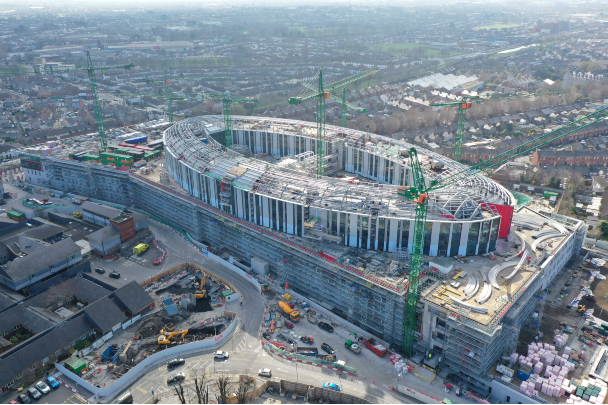May 31, 2024 Opinion piece
The construction and facilities management industry faces significant challenges in becoming more sustainable, increasing safety, improving productivity and reducing costs. New legislation, such as the Building Safety Act 2022, is also fuelling a growing demand for consistent, trusted and accurate data on the procurement and management of materials at every step of the supply chain.
If industry is to overcome these challenges, it is essential that any data related to a building's design, construction and ongoing management can be seamlessly shared and utilised by different stakeholders, systems and registries. This will be critical for achieving digital transformation and the industry must digitalise if it is to deliver lasting change and a clear pathway for the future.
GS1 standards can power this transformation. By providing stakeholders with a global data language, they facilitate interoperability and data exchange, allowing materials, equipment, assets and more to be uniquely identified and tracked throughout their lifecycles. This not only enables greater collaboration and transparency between stakeholders, it supports improved project management and resource planning, delivers traceability, reduces waste, and enhances safety.
GS1 member organisations across the world are already supporting businesses, government bodies and other parties in achieving their goals and the use of GS1 standards in construction continues to gain momentum.

Children’s Health Ireland: GS1 Standards in Action
Currently under construction, Children's Health Ireland’s (CHI) new children’s hospital in Dublin represents a ground-breaking application of GS1 standards.
This innovative project showcases how digital transformation, underpinned by trusted data, can revolutionize the way facilities are built, managed, and maintained.
Integrating globally unique GS1 identifiers for assets and locations has allowed CHI to create a safer, more sustainable and more efficient built environment.
By tagging each asset, from medical equipment to building components, with a unique GS1 identifier and capturing the resulting data in a comprehensive new asset management system, CHI has implemented real-time tracking across the facility's lifecycle. This not only ensures that the right assets are available at the right time and place, it also allows them to be managed more efficiently going forwards.
For CHI, the benefits of standards adoption have extended far beyond facility and asset management. It has helped CHI build and maintain a digital twin of the facility, providing a virtual model that mirrors the physical building itself. This digital twin supports operational efficiency and safety by enabling facility managers to simulate real-world scenarios, plan maintenance, and manage space, resulting in a safer, more efficient, and patient-centric environment.
A data driven future
The success of the CHI project highlights the potential of GS1 standards for transforming construction and facilities management.

Shervin Yousefzadeh, GS1 UK head of construction
By providing industry with an interoperable, standardised way of capturing and sharing vital data, they enable stakeholders to navigate the complexities of modern construction projects more effectively, all the way from the initial design stage through to operation and beyond.
If industry can come together and agree on a common approach to data, a new era of efficiency, safety and sustainability could be within our grasp.
We believe the adoption of GS1 standards will play a crucial role in shaping this future, fostering greater trust, collaboration and unlocking new levels of performance and innovation.




